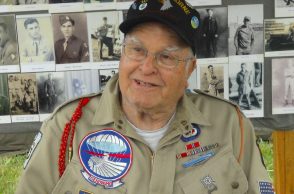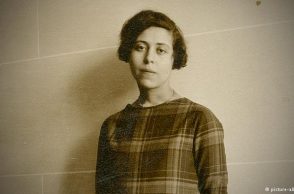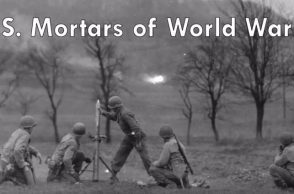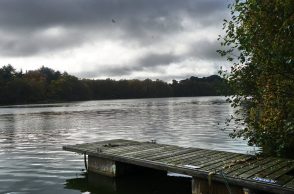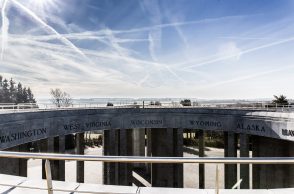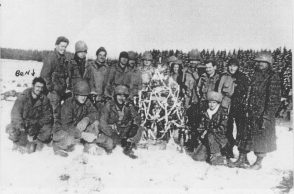On August 7, 1942 Petty Officer 1 st Class Saburo Sakai was piloting his A6M2 Type 21 Zero fighter in the skies over Sealark Channel in the Solomon Islands. He had flown down with a group of other Zeros from the Japanese airfield at Rabaul, New Britain that morning for the express purpose of attacking the ships supporting the first American opposed amphibious invasion of the Second World War: the Operation WATCHTOWER landings at Gavutu, Tanambogo, Tulagi and Guadalcanal. -by Martin K A Morgan
As Sakai and his wingman approached the skies above Tulagi, he spotted a group of eight American aircraft beneath him at an altitude of 7,800 feet. Assuming that they were US Navy F4F Wildcat fighters, Sakai nosed his Zero over to begin an attack his wingman obediently following. Closing in on the American aircraft from behind at full throttle, he assumed that the element of surprise was his. But at a range of just 100 yards Sakai gazed at his targets through his gunsight and reached a sober realization: these were not fighters he was approaching. By the time it was too late to break off the attack, Sakai realized that he was attempting to pounce on a group of dive-bombers. These aircraft were from the USS Enterprise (CV-6) and were circling above Tulagi awaiting orders to drop their bombs on Japanese targets on the island below. Unlike the F4F Wildcat fighter, US Navy dive-bombers were protected from rear attack by a tail gunner’s position.

Saburo Sakai
In the back seat of the bomber piloted by Ensign Eldor E. Rodenburg, Aviation Radioman 3rd Class James W. Patterson, Jr. opened fire. “He came in fast! I fired at him, but I just don’t know if I hit him or not,” he remembered. Sakai attempted to turn sharply to the right, pull up and use the Zero’s horsepower to climb away from the Americans, but he was too close. In the rear seat of one of the other bombers, Aviation Ordnanceman 2nd Class Harold L. Jones opened fire with Sakai only 100 feet directly astern his aircraft. What Jones saw next was a testament to the firepower that was available to the tail gunners: His cockpit exploded, the canopy tore, and something flew out. I could see his face clearly, his body and head forced back against the headrest of the cockpit. The plane went almost vertically upwards and then fell smoking. That was the last I saw of him. As the eight tailgunners followed the Zero with their machine guns, slugs shattered the canopy glass and hit Sakai. Fragments from the bullets struck him in the chest, the left leg, the elbow and the face. One tracer round missed his right eye by less than an inch and melted the rim of his goggles. In the brief encounter, the eight tailgunners expended over 1,000 rounds of ammunition and seriously injured one of the best Japanese fighter pilots of the war. Although Saburo Sakai would ultimately recover from his wounds and live to fight another day, he had been stung by one of the most lethal aircraft in the US military’s arsenal: the Douglas SBD Dauntless dive-bomber.
[read more=”Read more” less=”Read less”]

Radioman 1st Class James Patterson, Jr. (still onboard).
The SBD Dauntless was developed as an evolution of Northrop Aviation Corporation’s BT-1 and BT-2 dive bombers that entered service in 1936. At that time, the U.S. Navy was transitioning from bi-planes to all metal, low-wing monoplanes with retractable landing gear, and the BT series were on the cutting edge of that transition. In 1937, Douglas Aircraft Company purchased Northrop Aviation’s El Segundo, California plant and took over the BT program. With minor modifications by Douglas, the BT-2 became the SBD-1 Dauntless in 1939 and deliveries of the aircraft began in June 1940. The basic airframe appearance of the Dauntless was established with the first model and would vary only slightly throughout production. Its’ distinctive greenhouse canopy and round tipped wings made it an easily identifiable aircraft. But perhaps the most recognizable feature of the Dauntless was its perforated dive flaps. In a steep dive, these flaps would deploy upward and downward from the trailing edge of the wing to maintain a constant airspeed of 250 knots. The perforations in the flaps allowed airflow to stabilize the aircraft, making the Dauntless a rock solid bombing platform.
The SBD was also a well-armed bomber: the pilot could control a pair of ANM2 .50-cal. machine guns mounted in the cowling firing through the propeller arc using an interrupter and the radio-operator/gunner’s position was equipped with an aftfacing swivel mount for the ANM2 .30-cal. machine gun to protect the aircraft from a tail attack (as Saburo Sakai so painfully learned in the skies over Sealark Channel on August 7, 1942). But the Dauntless was built to deliver bombs with precision, so the aircraft was equipped with under wing ordnance mounting points. A pair of 100-pound bombs could be carried on outer wing pilings and, on the aircraft’s center-line, a fork shaped bomb displacing gear allowed the mounting of 250-pound, 500-pound and even 1,000-pound bombs. On release, the bomb displacing gear would swing downward so that the bomb would clear the aircraft’s propeller. A telescopic sight mounted in the cockpit allowed the pilot to aim the delivery of his under-wing ordnance. In all, these features made the Dauntless a simple, effective and rugged combat aircraft. The SBD-1 was equipped with the powerful 1,000hp Wright R-1820-32 radial engine but it had an overall flight range that was considered too modest for aircraft carrier operations. For that reason, the SBD-2 was developed with an increase of 100 gallons in fuel capacity extending the aircraft’s maximum radius from 860 miles to 1,125 miles. The Marine Corps began operating the SBD-1 in 1940 and the Navy began using the SBD-2 in 1941. At about that same time, Douglas produced the SBD-3 version of the Dauntless with another increase in fuel capacity, extending maximum bombing range to 1,345 miles. This third model of the Dauntless entered service in March of 1941 and also saw the introduction of self sealing fuel tanks as well as armor protection for the crew. The Navy began replacing its’ SBD-2s with SBD-3s immediately, handing the SBD-2s down to the USMC. That process was still in motion when the Japanese attacked the U.S. on Sunday, December 7, 1941 – and the Dauntless went to war.
 The SBD experienced combat from the very first day of the conflict, with the first losses the result of action with Japanese aircraft over Oahu in the Territory of Hawaii. In the aftermath of Pearl Harbor, the Dauntless was one third of the 3 team of aircraft that served on U.S. Navy aircraft carriers during the first six critical months of the war. Along with fighters and torpedo bombers, SBDs flew during each of the hit and run raids during the opening quarter of the year 1942. Attacks on the Marshall Islands, Wake, Marcus, as well as Lae and Salamaua on the west coast of New Guinea included the Dauntless. When the aircraft carrier USS Hornet (CV-8) carried 16 Army B-25B medium bombers for the Halsey/Doolittle raid on Tokyo in April 1942, SBDs from the USS Enterprise (CV-6) flew combat air patrol to protect them. In early May, SBDs from the aircraft carriers USS Lexington (CV-2) and the USS Yorktown (CV-5) flew combat sorties during the Battle of the Coral Sea and contributed to the notable sinking of the Japanese light carrier Sh ōh ō near the Louisiade Archipelago on May 7, 1942. During the Battle of the Coral Sea, the Dauntless proved that it was very effective at the job it was designed for – search and strike. In addition to that though, SBDs in the hands of skilled naval aviators during that battle proved that the aircraft was good at something else too – air to air combat.
The SBD experienced combat from the very first day of the conflict, with the first losses the result of action with Japanese aircraft over Oahu in the Territory of Hawaii. In the aftermath of Pearl Harbor, the Dauntless was one third of the 3 team of aircraft that served on U.S. Navy aircraft carriers during the first six critical months of the war. Along with fighters and torpedo bombers, SBDs flew during each of the hit and run raids during the opening quarter of the year 1942. Attacks on the Marshall Islands, Wake, Marcus, as well as Lae and Salamaua on the west coast of New Guinea included the Dauntless. When the aircraft carrier USS Hornet (CV-8) carried 16 Army B-25B medium bombers for the Halsey/Doolittle raid on Tokyo in April 1942, SBDs from the USS Enterprise (CV-6) flew combat air patrol to protect them. In early May, SBDs from the aircraft carriers USS Lexington (CV-2) and the USS Yorktown (CV-5) flew combat sorties during the Battle of the Coral Sea and contributed to the notable sinking of the Japanese light carrier Sh ōh ō near the Louisiade Archipelago on May 7, 1942. During the Battle of the Coral Sea, the Dauntless proved that it was very effective at the job it was designed for – search and strike. In addition to that though, SBDs in the hands of skilled naval aviators during that battle proved that the aircraft was good at something else too – air to air combat.
On the morning of May 8th, a section of SBD-3s was flying anti-torpedo-plane patrol to protect the USS Yorktown (CV-5) from enemy torpedo bombers. Lt. (JG) Stanley “Swede” W. Vejtesa, one of the pilots of the patrol, had put a 1,000-pound bomb through the deck of the Sh ōh ō the day before and was minutes away from still more excitement. Shortly after 1100 hrs. the SBDs were attacked by a group of Japanese Zero fighters from the carrier Zuikaku. With superior speed and agility, the nimble fighters quickly brought down four of the SBDs, but then they came up against Swede Vejtasa. After surviving the first attack, Lt. (JG) Vejtasa yelled to his radio-operator/gunner: “Son, we’re in for a scrap – keep your head and conserve your ammunition…. I’ll take care of the rest.” With guns blazing, the Zeroes made pass after pass at Vejtasa’s SBD. Each time one of the enemy fighters attacked, Swede would turn into it and spoil the set-up. Then, Vejtasa would fire back at the attacker using the twin ANM2 .50-cal. machine guns in his engine cowling. All the while his radio-operator/gunner in the backseat held-off the enemy with his twin ANM2 .30- cal. machine guns. Despite being harassed by three Zeroes for an exhausting 25 minutes, Vejtasa’s SBD survived. Despite the fact that he was flying a dive-bomber against fighters, Vejtasa miraculously shot down one of the Zeroes. SBDs fought air-toair engagements with the Japanese time and time again and were credited with 138 shoot-downs during World War II. Clearly, the SBD was no ordinary dive-bomber. Although it proved its mettle during the early hit-and-run raids and in history’s first carrier vs. carrier battle in the Coral Sea, the SBD’s finest hour came in June 1942 during the Battle of Midway. The Japanese descended on the battle area with naval might divided into a transport force, a main body and an aircraft carrier striking force composed of the fleet carriers Kaga, Akagi, Soryu and Hiryū. Their objective was double: capture Midway Island and lure the remains of the U.S. Pacific fleet into a final, decisive battle that would destroy it once and for all.

Maj Lofton R Henderson, USMC 1941
The Marine’s strike against the Japanese fleet was a part of a cascading series of attacks from various land and carrier based Army and Navy squadrons. Before VMSB-241 arrived on the scene to harass the Japanese carriers, Navy TBF-1 Avenger torpedo bombers and Army B-26 Marauder medium bombers had already been there. After Lofton Henderson’s SBD-2s made their attack and departed the area, a group of Army B-17 Flying Fortress bombers struck followed by a group of 11 SB2U-3 Vindicator dive bombers (also from VMSB- 241 ). All of these attacks were conducted by ground based aircraft and took place between 0800 and 0820 hrs. on June 4th. Although brief in duration and responsible for almost no damage, these attacks forced the Japanese ships to maneuver defensively, forced their anti-aircraft gunners to expend large quantities of ammunition and made their combat air patrol aircraft burn fuel. For the next hour, the Japanese carriers were able to recover aircraft and begin the process of re-arming and re-fueling, but then American carrier based squadrons began a new series of attacks. At approximately 0920 hrs. a formation of 15 TBD-1 Devastator torpedo planes from the USS Hornet (CV-8) began an attack on the carrier Soryu. With no fighter escort to protect them from the nimble Zeroes, all 15 of the slow moving TBDs were easily picked-off within a matter of minutes. They did no damage to the enemy fleet. At 1000 hrs. a formation of TBDs from the USS Enterprise (CV-6) arrived on the scene and commenced an attack. Fifteen minutes after that, TBDs from the USS Yorktown (CV-5) closed-in on the Hiryū. Once again the Japanese fleet dodged the bullet and suffered no meaningful damage. The cumulative effect of fighting off enemy aircraft for more than two hours stretched the Japanese to the limit. Although thus far they had been successful in defending their carriers, their luck was about to run out. The true decisive moment of the Battle of Midway began just as the Yorktown TBDs were concluding their attack. As Japanese gunners and combat air patrol fighters attempted to bring down the last of the Devastators escaping at wave-top level, lookouts on the Akagi noticed enemy aircraft high above the fleet. It was 1022 hrs. on June 4, 1942 and the course of World War II history was about to be changed by 48 SBD Dauntless dive bombers. At that moment, 25 SBD-3s from the Enterprise entered their dives in an attack on Kaga that quickly resulted in four direct hits. Just moments later, six other Enterprise SBD-3s dove on Akagi and scored two direct hits with lethal 1,000- pound bombs. Simultaneously, 17 Yorktown SBD-3s dove on Soryu scoring three hits with 1,000-pound bombs. In four minutes’ time, three Japanese fleet aircraft carriers – each of which had participated in the Pearl Harbor raid – were raging infernos. Although it escaped destruction in the morning raid, a group of SBDs from Enterprise and Yorktown found the Hiryū later that afternoon and hit it with four bombs, destroying it as well. Thus the Japanese ended the day on June 4, 1942 having lost all four of their aircraft carriers to American SBDs. It was so significant a loss that it materially altered 6 their battle plan beyond salvaging. For that reason, Admiral Yamamoto ordered a general retirement from the battle area that night. With the cancellation of the plan to capture and occupy Midway, and the obvious failure to destroy the U.S. Pacific fleet in a final, decisive showdown, the Japanese conceded defeat. Although technically the battle was over, the Dauntless was not quite yet done destroying ships.

Aircraft carrier HIRYU
The following day (June 5th), U.S. forces pursued the retreating Japanese westward as they withdrew in defeat. Since all four aircraft carriers were now on the bottom of the sea, the cruisers Mikuma and Mogami offered the most tempting target as they limped away from the battle area at 15 knots. Having collided with Mikuma the night before, the Mogami was struggling with damage that caused a dramatic reduction in speed. Accordingly, SBDs from VMSB-241 launched an attack against the two ships the morning of the 5th, but they scored only near misses that slightly damaged Mikuma. The following morning (June 6th), a strike of 81 SBDs from Hornet and Enterprise found the two cruisers and attacked them in three waves. After being hit by two 1,000-pound bombs, Mogami sustained additional damage but lived to fight another day. Hit by three 1,000-pound bombs, the Mikuma was reduced to a burned-out hulk dead in the water. The ship sank later that evening – marking the end of the battle. The tally of Japanese losses was staggering: 248 combat aircraft and just over 3,000 men had been lost. Four fleet aircraft carriers and one cruiser had been sunk. The Akagi, Kaga, Soryu, Hiryū and Mikuma had all been destroyed by the Douglas SBD Dauntless. But something else was destroyed at Midway – Japanese ambition.

Aircraft carrier KAGA
Enterprise and Hornet fought the Battle of Santa Cruz Islands. Then in November, on the other side of the globe, SBDs from the carrier USS Ranger (CV-4) flew air support for the Operation TORCH landings in North Africa. On November 10, 1942, nine SBDs from the Ranger sank the moored battleship Jean Bart in port at Casablanca, Morocco. With the sinking of the Japanese battleship Hiei three days earlier in the Pacific, this was the second enemy battleship sunk by SBDs within one week. During the early part of the war, the Army also used the Dauntless under the nomenclature A-24 Banshee. Essentially an SBD-3 without a tail hook, the A-24 replaced the SBD’s solid tail wheel with a large pneumatic tire. The Banshee entered service in March 1941 but had a far less distinguished career flying for the Army. When the war began, the A-24 was to equip the 27th Bombardment Group in the Philippines but the surrender of Bataan saw the Banshee diverted to Australia, where it equipped the 91 st and 8th Bombardment Squadrons. The 91 st Bombardment Squadron took its aircraft to the Dutch East Indies, and the 8th BG operated from the north coast of Australia. As the Navy model changed, so did the Army model. In late 1942 the Navy SBD-4/Army A-24A began to enter squadron service with only minor changes from the previous model. By that point in the war, the Army was no longer using the Banshee in combat but the SBD-4 went into full fleet carrier service. When the Curtis SB2C Helldiver entered service in late 1943, the Dauntless was no longer the Navy’s front line dive bomber. Despite that though, the most produced variant of the aircraft was introduced at about that same time. The SBD-5/A-24B featured an increased ammunition carrying capacity, an illuminated bombsight and also introduced the 1,200hp Wright R-1820-60 engine. A total of 3,640 SBD-5s/A-24Bs were produced during 1943 at the height of industrial production in the U.S. These aircraft went on to fight some of the most dramatic encounters of the latter years of the war. During this period, carrier based Navy SBD-5s participated in raids against the Japanese garrison on Wake Island (October 1 943) as well as the Operation HAILSTONE raid against the Japanese fleet anchorage at Truk lagoon in February 1944.
 The Dauntless also fought north of the Arctic Circle when SBD-5s from the Air Group of the USS Ranger (CV-4) participated in Operation LEADER – a strike against German shipping in Bodø Harbor, Norway on October 4, 1943. Since the Army was no longer using the Banshee in combat, some A- 24s were turned over to the USMC for ground based operations. Some of these aircraft flew anti-submarine patrols over the Caribbean out of a base in the Virgin Islands while others assigned to VMSB-236 participated in a raid on Rabaul on January 14, 1944. The introduction of the SB2C Helldiver and the SBD’s lack of folding wings resulted in its gradual disappearance from Navy carrier air groups during 1944. The last major aircraft carrier operation it flew came on June 20, 1944 when SBD-5s from the USS Enterprise (CV-6) and the USS Lexington (CV-16) flew a strike against the Japanese Mobile Force during the Battle of the Philippine Sea. The following month when SBDs flew in support of ground forces fighting to liberate Guam, it marked the conclusion of the aircraft’s shipboard service. At about that same time, the final version of the Dauntless was introduced as the SBD-6. Although the most powerful and advanced variant of the series, the 450 SBD-6s produced remained stateside for the most part. Meanwhile overseas, SBD-5s continued to serve in ground based squadrons until the very end of the conflict. For example, Marine Air Group 12 (“MAG-12”) moved to the island of Luzon, Philippines shortly after the amphibious landing of Army forces at Lingayen Gulf in January 1945. SBDs assigned to MAG-12’s famous VMSB-241 – best known for its stunning performance almost three years earlier during the Battle of Midway – flew numerous combat sorties in support of Army units on the ground until VJDay in August. At the end of the war, the Dauntless had many claims to fame – the most impressive of which was that it sank more Japanese shipping in the Pacific than any other Allied aircraft.
The Dauntless also fought north of the Arctic Circle when SBD-5s from the Air Group of the USS Ranger (CV-4) participated in Operation LEADER – a strike against German shipping in Bodø Harbor, Norway on October 4, 1943. Since the Army was no longer using the Banshee in combat, some A- 24s were turned over to the USMC for ground based operations. Some of these aircraft flew anti-submarine patrols over the Caribbean out of a base in the Virgin Islands while others assigned to VMSB-236 participated in a raid on Rabaul on January 14, 1944. The introduction of the SB2C Helldiver and the SBD’s lack of folding wings resulted in its gradual disappearance from Navy carrier air groups during 1944. The last major aircraft carrier operation it flew came on June 20, 1944 when SBD-5s from the USS Enterprise (CV-6) and the USS Lexington (CV-16) flew a strike against the Japanese Mobile Force during the Battle of the Philippine Sea. The following month when SBDs flew in support of ground forces fighting to liberate Guam, it marked the conclusion of the aircraft’s shipboard service. At about that same time, the final version of the Dauntless was introduced as the SBD-6. Although the most powerful and advanced variant of the series, the 450 SBD-6s produced remained stateside for the most part. Meanwhile overseas, SBD-5s continued to serve in ground based squadrons until the very end of the conflict. For example, Marine Air Group 12 (“MAG-12”) moved to the island of Luzon, Philippines shortly after the amphibious landing of Army forces at Lingayen Gulf in January 1945. SBDs assigned to MAG-12’s famous VMSB-241 – best known for its stunning performance almost three years earlier during the Battle of Midway – flew numerous combat sorties in support of Army units on the ground until VJDay in August. At the end of the war, the Dauntless had many claims to fame – the most impressive of which was that it sank more Japanese shipping in the Pacific than any other Allied aircraft.
The SBD Dauntless could also claim the lowest loss ratio of 8 any U.S. Navy carrier based combat aircraft in World War II. When you consider that each example of the aircraft responsible for the miracle at Midway was costing the U.S. government a mere $29,000 in 1944, you have to recognize that the Douglas SBD Dauntless was truly one of the greatest aircraft of the Second World War.
 [/read]
[/read]
